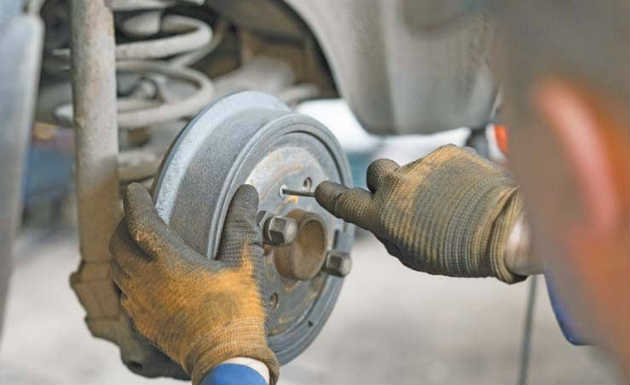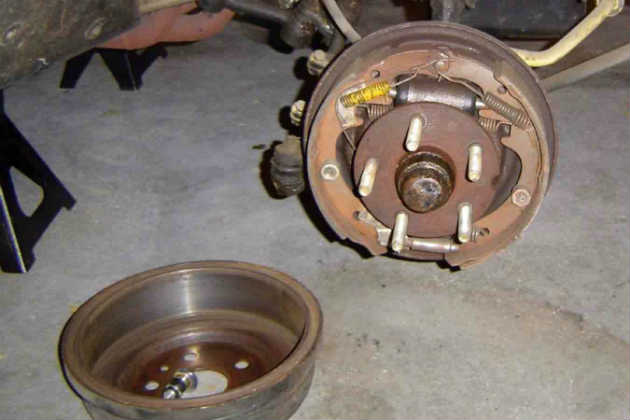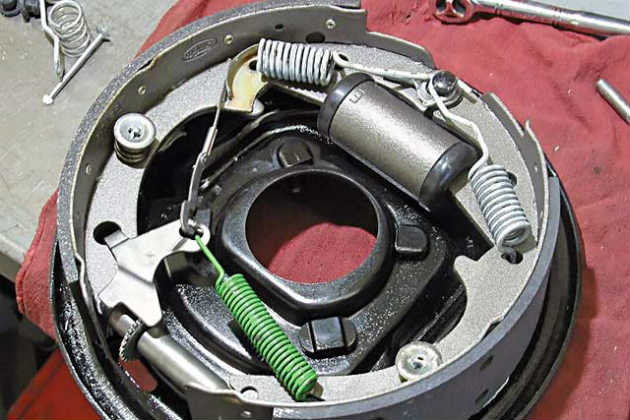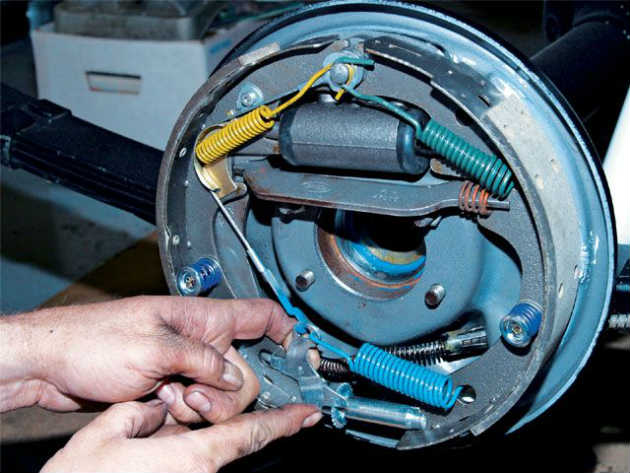The Importance of Properly Adjusted Drum Brakes
For many years, vehicles came equipped with disc brakes at the front and automotive drum brakes at the rear. Most modern vehicles, however, now come fitted with car drums at both the front and rear. This is due to the fact that these brakes last a long time and offer superior performance if maintained properly. Part of maintaining the brakes is periodically adjusting them to ensure they don’t drag when driving, as that will not only make them wear quicker, but also rob your vehicle of power.

Car drum brakes can only be adjusted when they’re in good shape, and worth noting is that not all automotive drum brakes are adjustable. But how do you know whether your car drums are in good shape? Or rather, how do you know whether they’re in bad shape? Well, there are a few common symptoms that will let you know that something’s off, the most common symptom of which is an unusual pedal feel. If the drums are worn, they’ll cause vibrations that can be felt in the pedal. Further, worn drums can cause pulsating or shuddering that’s noticeable when you step on the pedal.
Another symptom of a failing drum is abnormal sound production. If your drums are worn, they’ll give off a scratching or scraping sound when depressed. This usually means the brake shoes are worn and due for inspection to determine the cause of the noise. And the last common symptom is a loose parking brake. As the drum wears, the shoes may not squeeze against the drum’s insides as easily. Consequently, the parking brake won’t work as efficiently. This can also be a result of misadjusted brake cables and worn shoes. If you suspect this may be the case, you may have to adjust the drum brakes or replace them completely.
How to Adjust Drum Brakes?

Start off by getting the necessary materials for adjusting your drums, including eye protection, a hi-lift jack, jack stands, screwdriver, torque wrench, a socket and ratchet set and paper towels or rags.
Make sure your vehicle is in park and that the parking brake is on. Lift the rear end with the help of a hi-lift jack by placing the jack at a secure location under the vehicle and putting a jack stand under the lifted side. You’ll need to do this to the other side at a later point as well.
Once the vehicle is lifted, remove the tyres by unbolting the lug nuts. Leave the nuts in a safe location and remove the tyres for the time being.
After removing the tyres, access the drum car drum adjuster that’s under an access cover in the back of the drum brake. Pry out the rubber grommet that protects the access cover with the help of a screwdriver, and adjust the star wheel by turning the star-shaped adjusted a couple of times.
If the adjuster doesn’t stop turning due to the pads hitting the drum, simply turn it in the other direction. Once the pads hit the drum, back the star wheel off by a single click. Spin the drum using your hand and feel for drag. The drum should spin with minimal drag, and if it doesn’t – just back off the star slightly. Repeat until the brakes are adjusted to where you want them to be.

Checking Your Work
Once you’ve adjusted the brakes, place the adjuster cover back into place and look over to confirm that everything is in position. Install your tyres back with the help of a ratchet or tyre iron, and tighten the lug nuts until they fit snugly. Make sure the torque is according to the manufacturer’s specs.
Lower the vehicle from the hi-lift jack safely, and take your vehicle for a test drive to confirm the adjustments are done properly. Before you start driving, pump the brake pedal a couple of times to seat the brakes and make sure they operate properly. Drive only in a safe location to make sure the brakes function properly.
Adjusting your brakes will make them last much longer and it will prevent drag. If the brakes drag, you’ll experience lower mileage and loss of power.

Professional Adjustment and/or Replacement
Most people feel uncomfortable adjusting the brakes on their own, and rightfully so. The brakes are the most important safety feature of your vehicle, and you shouldn’t even think of adjusting or replacing them on your own unless you know your way around cars. Instead, go to an experienced mechanic and have them do it for you. Adjusting or replacing a drum brake won’t be a lengthy task for them, and it won’t be an expensive endeavour for your either. With that said, as soon as you notice some of the aforementioned symptoms of failing car brake drums, don’t hesitate to get them checked out as soon as possible.



